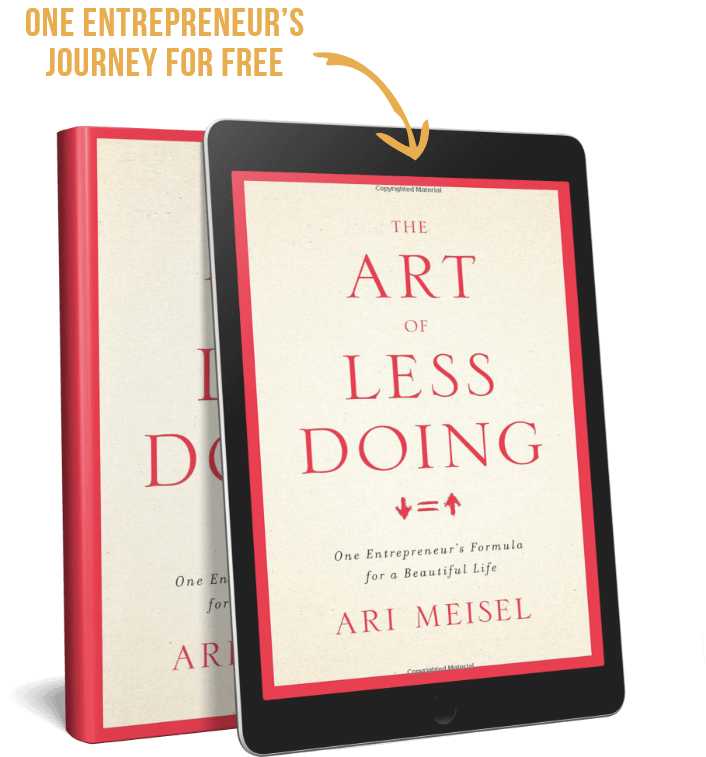What do inventory systems and project management have in common?
It’s all about the order in which things are done.
Not sure what we’re getting at? Have no fear, it’ll become clear very soon. And when it is clear, it could make a huge impact on budding founders and entrepreneurs and how they approach project management.
A Brief Introduction to FIFO and LIFO
When a grocery store purchases milk — or any perishable item — the oldest products are pushed to the front. This way, the food will be sold before its expiration date while the next oldest item is put in its place.
After all, if the item perishes, it generates a direct loss in profit. When items have a best-by-date, such a technique makes perfect sense.
Above, is an example of “first in, first out” or FIFO inventory management, which shows that a company’s priority is the sale of items first purchased for resale. FIFO is believed to be the most profitable inventory method because the cost of producing goods will rise over time.
Not only does the FIFO model make sense for grocery stores, but also for businesses with products that go off-trend or become obsolete such as fashion retailers.
Conversely, the “last in, first out” or LIFO method of inventory management is best suited for commodities such as petroleum, metals, and chemicals. It counts the cost of goods sold instead of what was paid for the inventory that was already in stock. Provided the goods increase in price after the initial purchase, the “cost of goods sold” metric will be greater. Thus, profits will reduce, but so will tax burdens.
However, the direction we’re going is quite different from the traditional concepts of FIFO and LIFO.
We are taking these principles and applying them to project management and workflow. Look at the ‘goods’ or ‘products’ in the above example and replace them with work from clients and customers.
Throughout this post, we’ll be discussing where FIFO and LIFO can be used respectively for project management. In these examples, it will become apparent that FIFO is the ideal choice for assembly and service-based project management, while LIFO is conducive to sales conversions.
Let’s delve deeper below:
LIFO and Assembly-Based Tasks
There are plenty of reasons why FIFO is better for assembly-based businesses looking to efficiently manage projects.
We’ll start with scheduling:
First and foremost, any given project could come with a laundry list of hiccups. Therefore, placing every new bit of work to the back of the line offers enough time to problem solve in the case of unforeseen snafus.
FIFO makes it easier to predict and promise completion dates — no matter the difficulty level of the job. In fact, it’s better to give timeframes that are in line with the tougher work.
Think about it. Say a client brings forth something so rudimentary that it’d take just a couple of hours, but the set wait time is 2 weeks. Sure, it could technically be taken care of right away. But placing it to the back of the line means everyone can still focus on completing the insanely hard project they’d been working on for the past 10 days. Pushing the easier work to the front of the line could possibly lead to a missed deadline for another tougher project.
Of course, if business is slow, there’s nothing wrong with finishing a project early — but it’s better to under-promise and over-deliver. Saying that a project will take 2 weeks then finishing it in a week comes across a lot better than guaranteeing it’ll be completed in 2 days then finishing in 3. Furthermore, with a 2-week completion promise, a project can be completed in 1 day, 9 days, or the entire 2 weeks to the satisfaction of the customer. It offers the ultimate flexibility.
A solidified buffer time for all projects gives businesses more time to appease customers, whereas randomly prioritizing could lead to unnecessarily bungled time management.
Now we’ll look at FIFO through the workflow visualization lens:
It’s easier to visualize a straight line than one that swirls, zig-zags, and spirals.
With FIFO, the workflow will be linear, making tracking a piece of cake. If an engine needs 5 machining processes, machine workers can predict their required tools and will have time to order extra parts.
It’s possible because they’ll be doing the job sequentially from the beginning until the end. If they go from part 1 right to part 5 — skipping all the steps in between — it becomes vastly more difficult to be predictive and efficient.
In a nutshell, FIFO makes it so assembly-based project managers can see what lies directly in front of them rather than picturing tasks coming from all directions.
And finally, let’s examine how FIFO impacts delegation:
Having some form of implemented FIFO process makes delegation a cinch. Technicians only have to work on the next item in line. There’ll be no fussing over what’s the higher priority or who’s supposed to do what. Plus, managers won’t need to waste time needlessly doling out tasks to their team.
Instead, the rules will be set in stone. Technicians will place their finished work at the end of the line on the next rack, refer to whichever FIFO-based scheduling mechanism that’s being used, rinse and repeat.
Since workers won’t be bouncing around mid-task to jump onto another project, it makes it far easier to monitor time and efficiency. If projects are taking too long, managers can clearly assess whether the issues are due to a deficiency in skill or because of under-charging.
With all of this in mind, why would assembly-based project managers stray from the FIFO approach?
Now, despite project managers’ immense multi-tasking abilities, they aren’t demi-gods. They are human.
And the human element is what puts schedules into blenders, sends workflows into a whirlwind, and flips delegation onto its head.
Guess who else is human? Needy customers — one of the greatest hurdles placed in front of the FIFO method. Unfortunately, a trap many businesses and project managers fall into is forgetting the need for boundaries with customers/clients.
And in 2019, boundaries have never been more important. In days of old, customers couldn’t find an employee’s home number and hound them until the job was done. Meaning, lines didn’t need to be drawn. If a customer was difficult, they could only be so until 5 pm every work day. Now, these difficult customers can run amok 24/7. Cellphones, texts, and emails make it so these demanding clients can contact project managers any time they please.
Even when it’s been decided that a client is so unprofessional that they’re one-and-done, their project often gets pushed to the front of the line in an effort to speed up the departure.
While pesky clients are a reality of any business, there are ways to offset their obtrusiveness. Start by clearly illustrating the timeline for completion. Break it down in great detail — as to avoid any confusion. Also, project managers must be very clear about business hours as well as when and where they may be appropriately contacted.
From there, it’s a matter of quality customer service. Proactive status updates will prevent clients from pestering.
If a customer is abrasive to the point where the above measures won’t quell their quirks, there’s nothing wrong with ‘firing’ them. One project isn’t worth breaking the FIFO protocol.
Another prime contributor to breaking the FIFO-cycle is prioritizing preferred work.
Work projects are always going to be a mixed bag.
Some are going to be challenging in an engaging, fulfilling sort of way. While others are going to be challenging in a mind-numbing, slamming-head-into-a-wall sort of way. And others might not be challenging at all, and just plain boring.
Regardless, the way workers treat these projects can throw a wrench into what was once a well-oiled FIFO machine.
A job may not be glitz and glamor but it’s essential to complete it before the next (far more fun) project.
For FIFO to function at its fullest capacity, discipline is of the utmost essence. Breaking the FIFO chain because something isn’t desirable has greater consequences than just one job. More specifically, if it happens once, it’ll happen again. Suddenly, boring jobs start to pile up because all the fun ones were completed. Then, deadlines fall by the wayside — along with a business’s overall reputation.
No matter the mundanity of a job, it must be done well and punctually. Set aside the time to get it done. Provided the process was awful enough, use the experience as a lesson and reminder to avoid similar jobs in the future.
The lure of a quick buck can also throw FIFO project management for a loop.
We’ve all salivated at the idea of a few hundred dollars in our pocket at the blink of an eye.
Still, just because something seems profitable, doesn’t mean it is. A shop that’s backlogged with engines can’t afford to shift everything around for sake of an easy dollar. It could throw operations into complete chaos.
There is a compromise, however: some businesses will under-schedule daily workloads and leave a couple of hours open for walk-in appointments, as to not disrupt the FIFO flow.
Another business using the FIFO model for workload management was a maid service called Maids by Trade.
While cleaning homes and machine assembly are drastically different things, they are equally task-based. And completing first tasks, in both cases, removes the inefficiencies that stem from allowing new jobs to interfere with the old.
It’s a straight-forward concept. Multi-tasking means wasted time. Whereas, completing one job at a time — in the order that’s been promised — is far more productive.
Why LIFO Works in Sales
We’ll be honest, the LIFO model section isn’t as long as FIFO.
Part of the reason is that LIFO’s purposes are far more limited than those of its counterpart. Placing top priority on the newest task is counterintuitive. Why would a project manager neglect old tasks for something newer and shinier?
Comparatively, the FIFO model fulfills the needs of project managers in a multitude of industries — not just machine shops and maid services. From web designers to construction workers, the FIFO model has its place.
However, LIFO is a good fit for sales-based tasks — particularly for big-ticket items such as homes.
Why? Because the likelihood of converting a real estate lead decreases as time passes. Or, the lead ‘cools down,’ as they say in the industry.
So, it’s proven to be more fruitful for real estate agents to focus the bulk of their efforts on new leads because they’re ‘hot.’
Perhaps it’s the amount of money being spent on a real estate purchase that makes LIFO the model of choice for those in the industry. The more people can stew over such a large investment, the greater the chance for hesitation and second-guessing.
Therefore, we hypothesize that the LIFO model might be effective for other big-ticket items like automobiles. Much like real estate agents, car salesmen must strike when the proverbial iron is hot.
Can FIFO and LIFO Work in Harmony?
FIFO and LIFO by their very natures seem like they could never exist within the confines of the same company.
But there are businesses out there with both service/assembly-based facets and sales facets.
Consider an advertising agency, for instance, who must first sell its high-priced services to viable businesses. From there, it needs to manage projects for those businesses where they must produce (or assemble) campaigns on a deadline.
It can be surmised that in order to acquire new business and sell themselves to clients, this hypothetical agency should utilize LIFO methods to capitalize on leads when they’re hot.
Then, once the client has been onboarded and projects are underway, the FIFO model can be put in place to ensure streamlined workload management.




